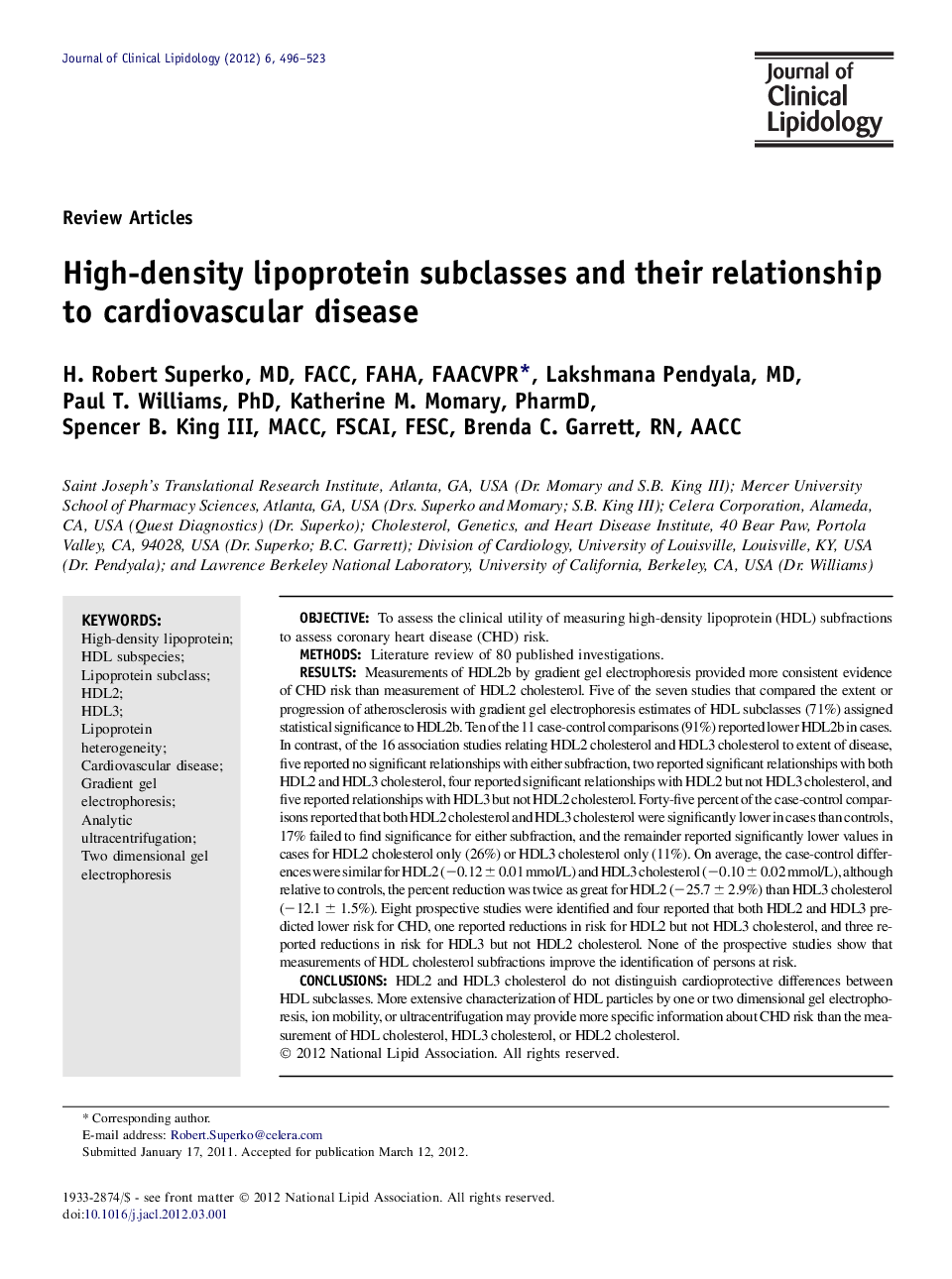| Article ID | Journal | Published Year | Pages | File Type |
|---|---|---|---|---|
| 2966241 | Journal of Clinical Lipidology | 2012 | 28 Pages |
ObjectiveTo assess the clinical utility of measuring high-density lipoprotein (HDL) subfractions to assess coronary heart disease (CHD) risk.MethodsLiterature review of 80 published investigations.ResultsMeasurements of HDL2b by gradient gel electrophoresis provided more consistent evidence of CHD risk than measurement of HDL2 cholesterol. Five of the seven studies that compared the extent or progression of atherosclerosis with gradient gel electrophoresis estimates of HDL subclasses (71%) assigned statistical significance to HDL2b. Ten of the 11 case-control comparisons (91%) reported lower HDL2b in cases. In contrast, of the 16 association studies relating HDL2 cholesterol and HDL3 cholesterol to extent of disease, five reported no significant relationships with either subfraction, two reported significant relationships with both HDL2 and HDL3 cholesterol, four reported significant relationships with HDL2 but not HDL3 cholesterol, and five reported relationships with HDL3 but not HDL2 cholesterol. Forty-five percent of the case-control comparisons reported that both HDL2 cholesterol and HDL3 cholesterol were significantly lower in cases than controls, 17% failed to find significance for either subfraction, and the remainder reported significantly lower values in cases for HDL2 cholesterol only (26%) or HDL3 cholesterol only (11%). On average, the case-control differences were similar for HDL2 (−0.12 ± 0.01 mmol/L) and HDL3 cholesterol (−0.10 ± 0.02 mmol/L), although relative to controls, the percent reduction was twice as great for HDL2 (−25.7 ± 2.9%) than HDL3 cholesterol (−12.1 ± 1.5%). Eight prospective studies were identified and four reported that both HDL2 and HDL3 predicted lower risk for CHD, one reported reductions in risk for HDL2 but not HDL3 cholesterol, and three reported reductions in risk for HDL3 but not HDL2 cholesterol. None of the prospective studies show that measurements of HDL cholesterol subfractions improve the identification of persons at risk.ConclusionsHDL2 and HDL3 cholesterol do not distinguish cardioprotective differences between HDL subclasses. More extensive characterization of HDL particles by one or two dimensional gel electrophoresis, ion mobility, or ultracentrifugation may provide more specific information about CHD risk than the measurement of HDL cholesterol, HDL3 cholesterol, or HDL2 cholesterol.
